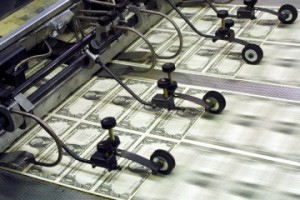 By Juan Pedro Marín Arrese, in Madrid | Markets around the world are flooded with huge loads of fresh cash pumped in by central banks. The balance sheets of central banks have tripled since 2008. And yet monetary supply is lagging behind. Don’t put the blame on banks. Their assets are shrinking as a result of the massive reshuffle in credit exposure undertaken by enterprises and individuals. A grim outlook is behind this reluctance to get indebted.
By Juan Pedro Marín Arrese, in Madrid | Markets around the world are flooded with huge loads of fresh cash pumped in by central banks. The balance sheets of central banks have tripled since 2008. And yet monetary supply is lagging behind. Don’t put the blame on banks. Their assets are shrinking as a result of the massive reshuffle in credit exposure undertaken by enterprises and individuals. A grim outlook is behind this reluctance to get indebted.
So where is the money flowing? To put it simply, a large hunk is hoarded by the financial system. The rest is used to buy sovereign bonds, thus removing much pressure up to now falling on public debt. It comes as a relief to governments but does little to alleviate the current slowdown. The obvious conclusion is that while money can help to avoid a full-fledge credit crunch, it does not create real wealth on its own. To do so you need people ready to invest and bet on future returns. You need better prospects for business.
The FED and the ECB have indeed prevented the worst from happening. QE have quelled fears about a financial crisis. But generous doses of liquidity have not succeeded against the odds of a creeping sentiment that things will turn worse. Lower than warranted overall expenditure is doing the rest. Only a combined effort by those that still have some room of manoeuvre could change this fettered stalemate. But so long policies are staunchly harnessed on austerity and the merits of cutting down expenses regardless of the price to be paid for it, little improvement is to be expected. Money can flow like water but be lost if it doesn’t feed into new jobs or enhanced activity.
* Juan Pedro Marín Arrese is an economist.





Be the first to comment on "When it comes to money, one can get really FED up"